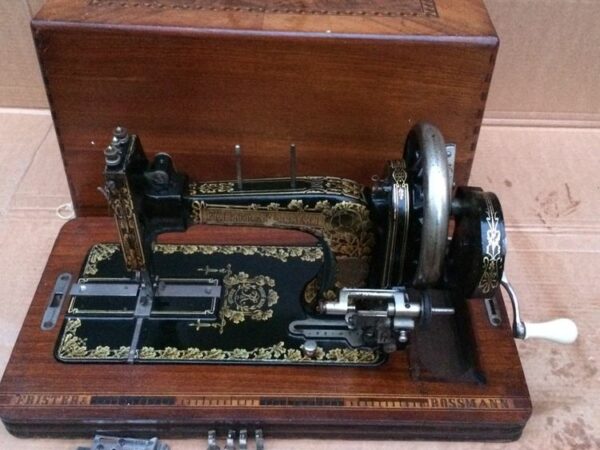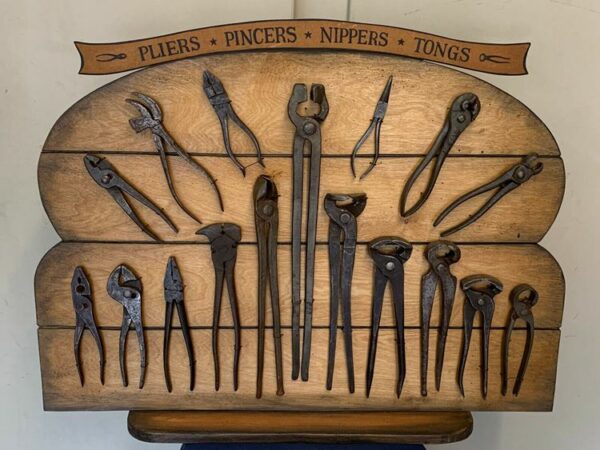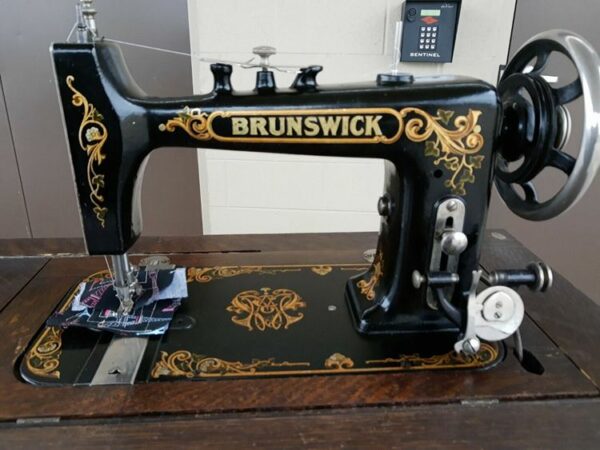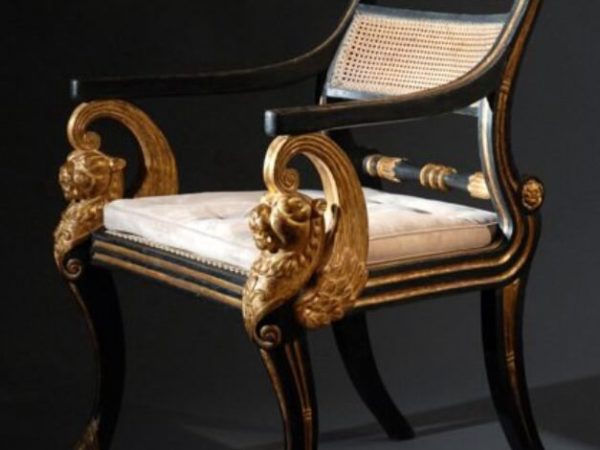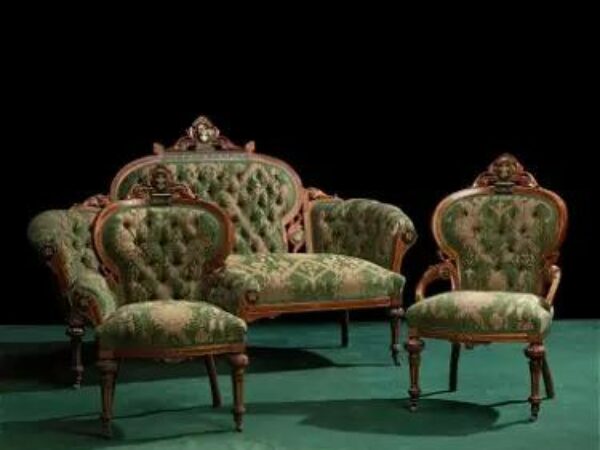For centuries, furniture has been a sign of luxury and wealth. The design and style of furniture, however, has constantly changed – for example, furniture from the Jacobean era of the 1600s is very different from the furniture produced in the Victorian era of the 1800s.
The style and design of antique furniture help collectors place antique pieces in the right manufacture era. This, in turn, allows the buyers to correctly gauge the price for specific pieces.
New antique collectors often find themselves struggling to distinguish furniture styles from different eras. In this detailed guide, we will take a deeper look at the main features that distinguish different antique furniture styles and designs.
Table of Contents
15 Timeless Antique Furniture Styles and Designs
1. Jacobean Antique Furniture Style (1600-1650)
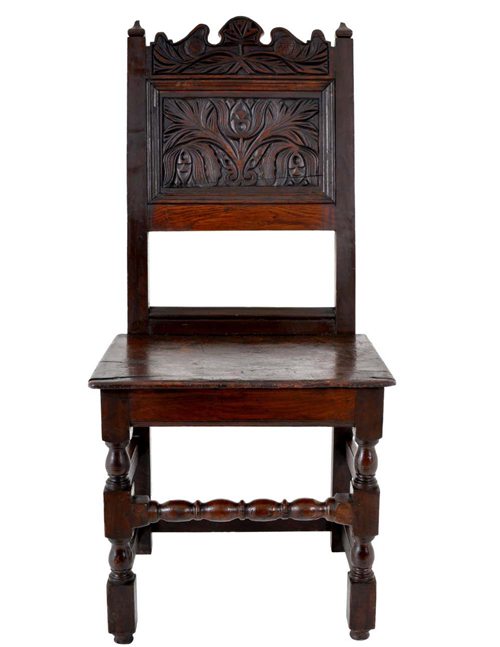
Famous between 1600 and 1650, the Jacobean furniture style has its origin in the English Early Renaissance. Antique Jacobean furniture features a dark finish, ornate carvings, and straight lines.
The furniture was massive, with severe perpendicularity being a major defining characteristic. The chairs, for example, featured rectangular seats, straight backs, and perpendicular legs.
2. Early American Style (1640-1700)
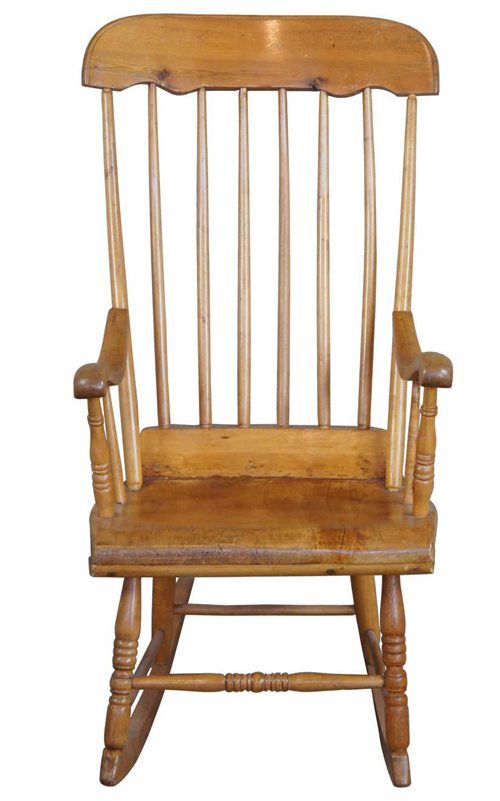
Early American antique furniture dates back to between 1640 and 1700. When introduced, the design was practical for trestle tables, furniture pieces featuring raised panels, and ladder-back chairs.
The antique furniture design largely focused on functionality, only minimally focusing on aesthetics. The Early American Furniture was focused on accommodating the practicality of the colonialists’ lifestyle.
However, as the furniture styles and designs evolved, the craftsmen making the Early American furniture started adding chipped carvings of varying motifs. These included scrolls, florals, leaves, and crescent shapes.
3. Louis XIV Style (1660-1690)
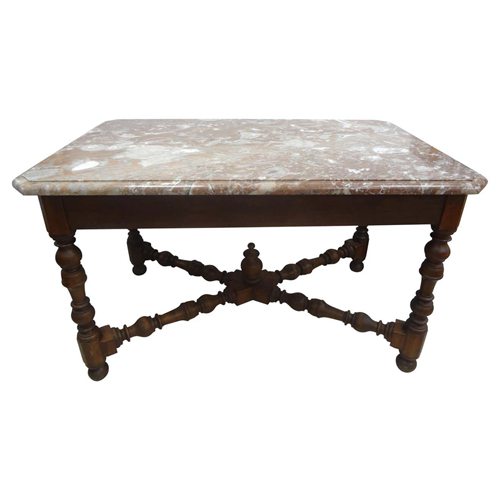
Influencing the years between 1660 and 1690, the Louis XIV furniture was oversized and featured massive ornamentation. The furniture’s style featured bronze gilded carvings and sculptures.
The antique furniture makers often used marquetry with varying colors mimicking exotic wood species. Mother-of-pearl and ivory were used for inlay designs.
4. William and Mary Style (1690-1735)
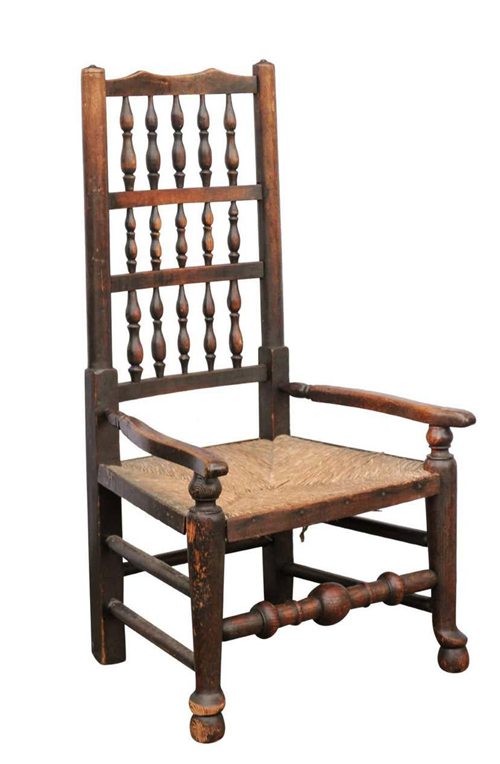
This antique furniture style and design were common between the years 1690 and 1735. The furniture style was largely influenced by Chinese and Dutch styles.
Chairs and tables often featured trumpet-turned legs that ended with Spanish ball feet. Most antique pieces from this period feature oriental lacquer work.
5. Queen Anne Style (1702-1714)
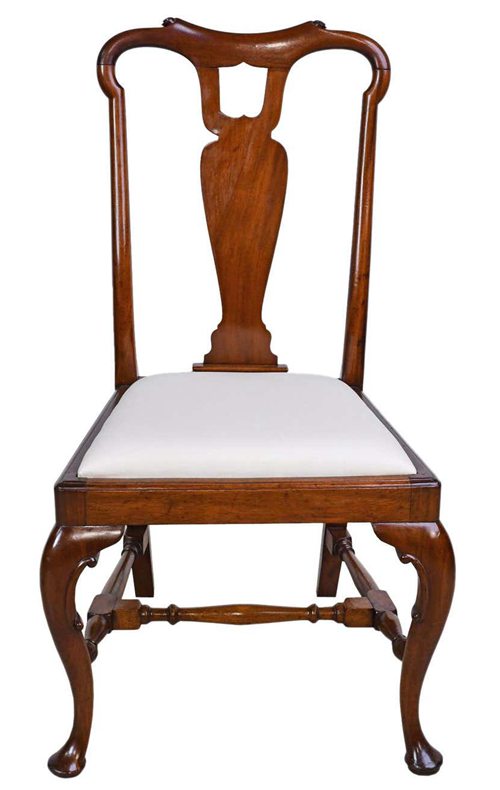
Although Queen Anne ruled between 1702 and 1714, her furniture design did not take off until 1720. The Queen Anne furniture style grew as the mainstay favorite design, remaining popular until 1760.
Queen Anne furniture design featured curved cabriole legs which functioned as its signature mark. The arms, backs, and legs carried curved lines that were often daintier than the furniture designs from earlier periods. Cushioned seats – which featured tapestry fabrics – were used to add comfort to the chairs.
Queen Anne’s furniture design featured very little ornamentation. The major motif in this furniture design was a very modest shell shape. However, the S-curve (Ogee), S-scrolls, and C-scrolls were featured on some pieces.
6. Louis XV Style (1715-1774)
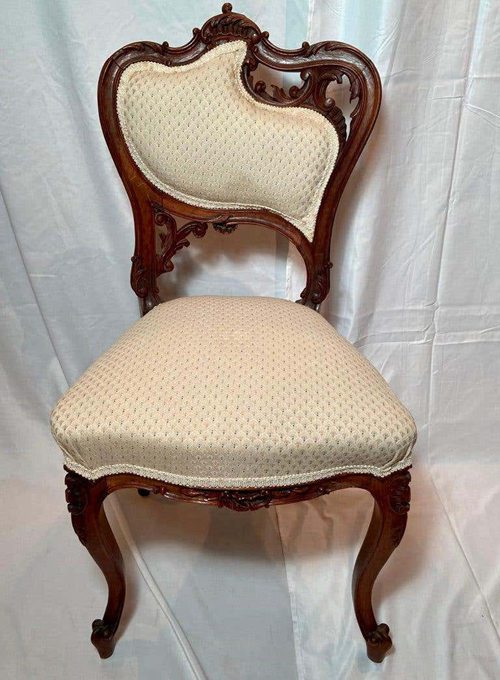
The Louis XV furniture style came to life in 1715 and stayed around until 1774. However, the Regency period – between 1715 and 1730 – continued most of the Louis XIV designs.
It was not until 1730 that Louis XV’s taste fully emerged. By 1750, Louis XV rejected excessive and massive ornamentations. Between 1750 and 1774, the furniture design shifted toward Neoclassical designs with Roman and Classical Greek motifs.
This antique furniture design features curved lines and is less boxy. The furniture is lighter and features a style that offers more comfort. The designers of this antique furniture style, however, still favored the inlay styles from the previous Louis XIV furniture design.
7. Pennsylvania Dutch Style (1720-1830)
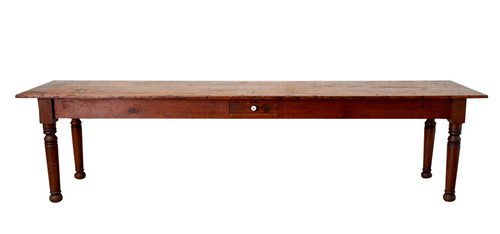
Existing between 1720 and 1830, most of the antique pieces that feature this furniture design have German influence.
The Pennsylvania Dutch Style featured straight lines, distinctive joinery, and tapered legs. Antique hutches and cupboards featuring this furniture style are oversized and designed to handle trappings for communal and family dinners.
Chairs from this period were often constructed with arrow-shaped back spindles while others had paneled wood backs. However, plain and upholstered wood were common among the Pennsylvania Dutch chairs since they were more about utility than comfort.
8. Louis XVI Style (1731-1811)
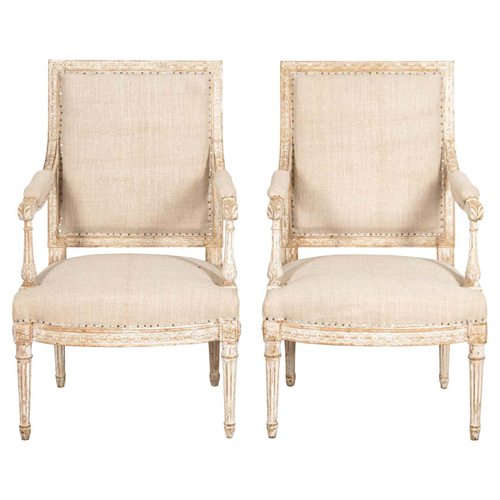
Popular between the years 1731 and 1811, the Louis XVI style replaced the previous bold and ornate lines with Neoclassical elegance. Some of the popular motifs used during this period included oak leaves, swags, laurel leaves, the Greek key, and acanthus scrolls.
The chair backs featured either a rectangular, round, or shield shape and were upholstered. The chair legs were fluted and column-shaped. The armrests on Louis XVI chairs extended into graceful scrolls that terminated on the chair’s seat.
9. Rococo Style (1730-1770)
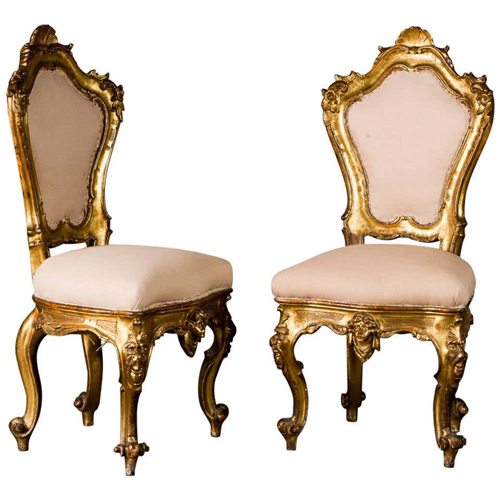
Emerging in 1730 and staying popular until 1770, this antique furniture style is easily recognized by its heavy carving ornamentations. The Regence style Rococo design was prominently produced by Charles Cressent, a French cabinetmaker.
The antique furniture style features the curvilinear design as the main distinguishing feature. Bombe Commodes featuring rounded convex sides and fronts carried marquetry in varying wood colors, marble tops, and carved ornamentations.
Large ornaments included floral motifs, C-scroll, and ribbons. Some antique pieces using this style may also feature curved, foliage scrolled, and iconic rosettes.
10. Chippendale Furniture Design (1750-1790)
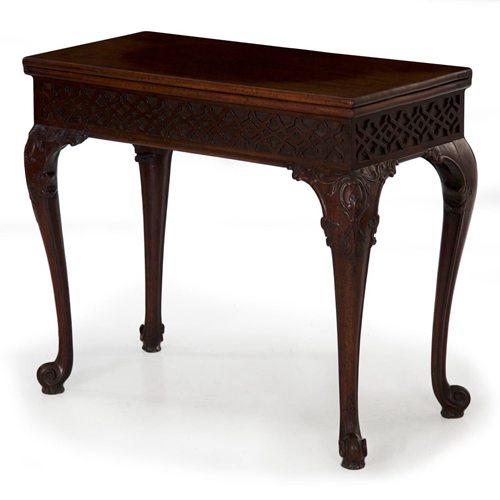
Dating back to between 1750 and 1790, this antique furniture design was created by a London cabinet maker known as Thomas Chippendale. The antique furniture design combines different aspects from a range of furniture styles, such as the S-curves from the Rococo style, Gothic arches, and wood lattices from the Chinese designs.
Thomas Chippendale adopted the claw and ball design for the antique furniture feet. He often carved claws grasping a ball – this design was influenced by the Chinese fu do design.
Thomas Chippendale also used fretwork on chair legs, chair backs, and table edges. The designer incorporated the famous cabriole leg style from the Queen Anne period.
11. Hepplewhite Furniture Design (1765-1800)
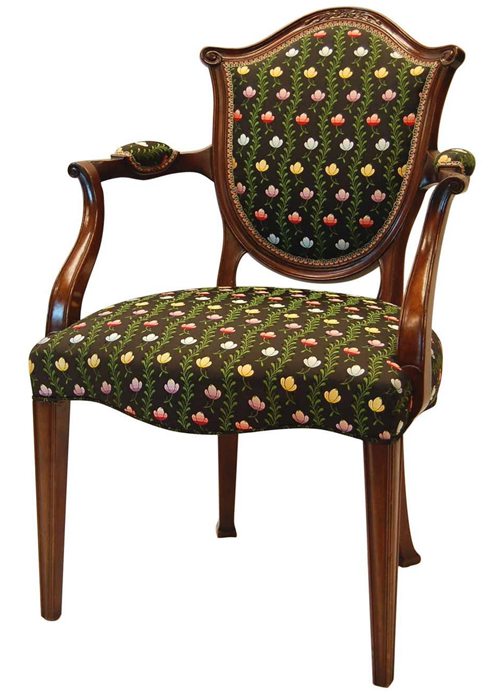
Named after a London designer by the name of George Hepplewhite, the Hepplewhite antique furniture design was popular between 1765 and 1800. Hepplewhite largely worked with symmetry and curves.
The arms on Hepplewhite’s chairs were curved and contrasted well with the furniture’s straight legs. Antique chairs using this design feature an iconic shield shape.
George Hepplewhite highlighted the beauty of inlays and wood with very few carvings. Some of the carvings used included classical urn shapes, ribbon curls, feathers, and swags.
The designer used contrasting colors of veneers and inlays to create his bellflowers and seashells. The feet on Hepplewhite’s furniture were rectangle-shaped or tapered.
12. Sheraton Furniture Design (1780-1820)
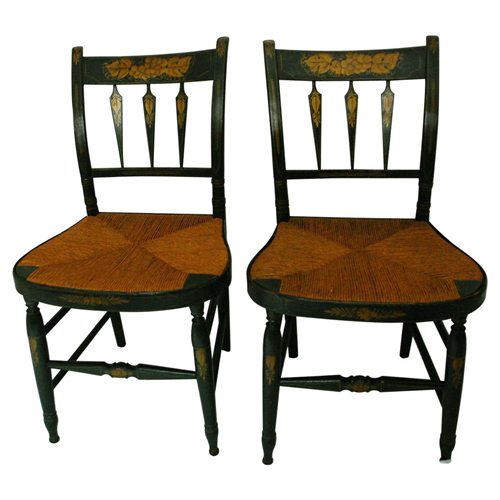
The Sheraton furniture design was famous between 1780 and 1820. This antique furniture style gets its name from George Sheraton, an English designer whose work overlaps with that of George Hepplewhite.
Sheraton’s design featured tapered round legs. Veneer inlays contrasted with the furniture’s wood, with woods most used by Sheraton including sycamore, rosewood, mahogany, and tulipwood.
Furniture fittings were made using brass. Some of the common motifs on antique Sheraton furniture include festoons, swags, and curved flutings. The pieces favored straight lines and were mostly lightweight.
13. Gothic Revival Style (1840-1876)
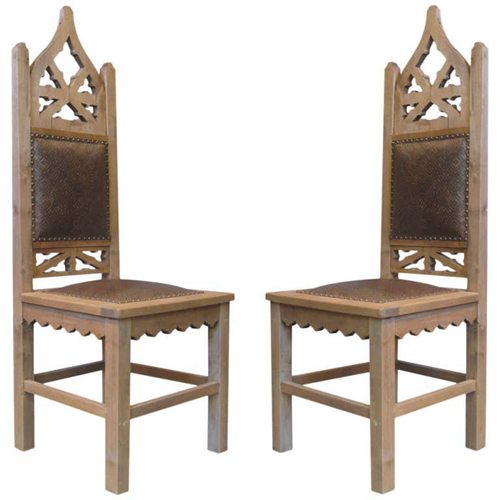
The Gothic Revival furniture style run from 1840 to 1876. Antique furniture pieces from this period were often cabinets that were designed for storage.
Dining chairs were high-backed, with the seats and backs being upholstered. Other motifs on this type of furniture included grooved panels, 5-arched shapes, and 4-petal flowers.
14. American Empire Style (1800-1840)
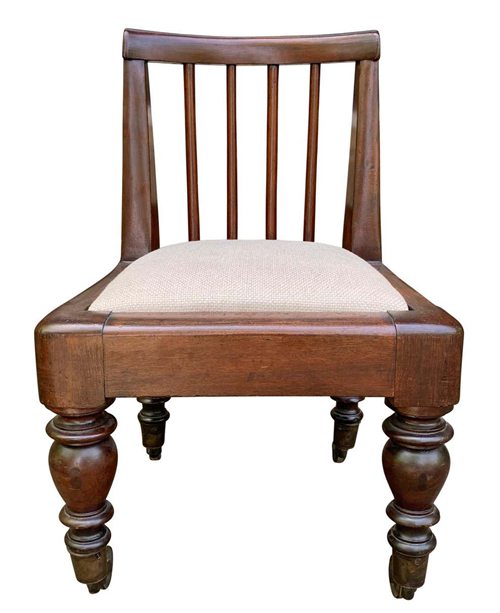
This antique furniture style dominated between 1800 and 1840. French-inspired, the American Empire furniture was popular in the United States until the late 19th century. The furniture features classical ornamentation, a dark finish, and course carvings.
15. Victorian Furniture Style (1830-1890)
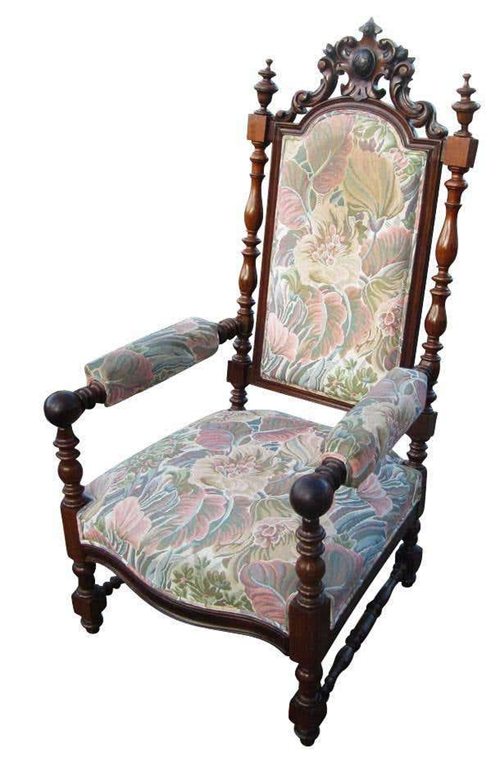
Dating back to between 1830 and 1890, the Victorian furniture style included balloon backs and deep seats. Its low arms – and armless – chairs were designed to accommodate women’s fashionable wide skirts.
The furniture’s wood was decorated with numerous embellishments of intricate carvings. The ornate carvings covered the wood tops of chairs and couches and appeared along the chair arms.
Motifs on the antique Victorian furniture range from chubby cherubs and leaves to vines, fruits, bows, and ribbons. The wood was often gold gilded and sometimes stained dark.
Conclusion
Antique furniture styles and designs cover a wide range of different eras. Each antique furniture design carries specific motifs and features.
Some antique furniture styles are heavily ornamental while other types may incorporate inlay designs that create an elegant effect. In this guide, we have discussed 15 popular antique furniture styles and designs.
If you feel there is an antique furniture style or design you need more information on, do not hesitate to let us know. Leave your question in the comment section and we will respond as soon as possible.
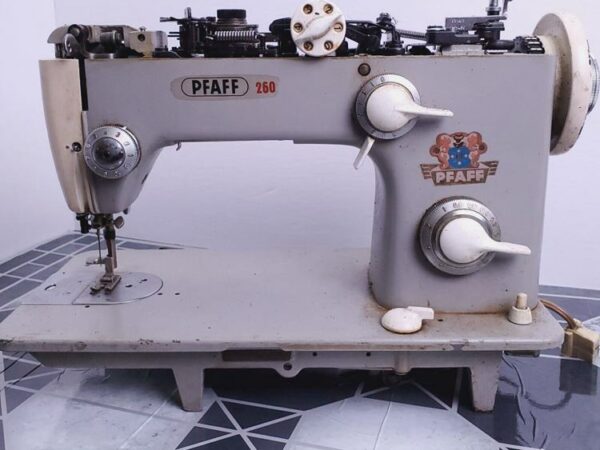
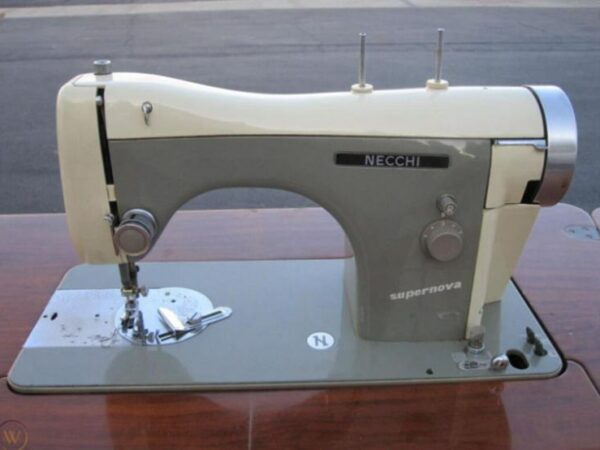
![Vintage Medicine Cabinet Styles Guide [With Pictures]](https://www.txantiquemall.com/wp-content/uploads/2021/12/Vintage-Medicine-Cabinet-Styles-Guide-600x450.jpg)
